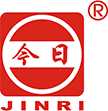What’s the Difference: Box File Vs File Tray?
Understanding the difference between a box file and a file tray is important for anyone organizing documents in an office, classroom, or home workspace. Although both tools store papers, their structures, capacities, and usage styles are not the same. This article explains how each item works, how they compare, and which situations suit them best. If you are setting up a professional workspace and looking for durable office storage solutions, JINRI offers a wide selection of well-designed filing products.
Overview of a Box File
A box file is a closed, upright storage unit shaped like a book. It typically comes with a spine label, metal finger ring, and a secure clasp. The rigid exterior protects documents from bending, moisture, or dust. Most box files are designed for A4 or letter-sized paperwork and can hold large amounts of documents in one compact structure. Users often rely on them for long-term storage, project categorization, or keeping private files safely out of sight.
Because a box file encloses documents completely, it maintains a clean and uniform look on shelves. It is ideal for workplaces that require archival storage or frequent transport of documents from one location to another. JINRI provides box files built with thick board and reinforced edges, ensuring stability during heavy use.
Overview of a File Tray
A file tray, sometimes called a document tray or letter tray, is an open-top organizer that holds papers horizontally. It sits directly on a desk and keeps documents easy to see and reach. File trays are available in single-tier or stackable designs, enabling users to build multi-layer paper sorting systems. The open structure promotes quick access, which is especially useful for documents that require daily handling.
A file tray is best suited for short-term organization such as managing incoming papers, outgoing files, work-in-progress sheets, or daily reports. The lightweight design and wide opening allow quick placement and retrieval without opening or closing a cover. Many office environments pair several trays together to form categorized sections like “To Do,” “Pending,” and “Completed.”
Key Differences Between Box Files and File Trays
To understand their functional differences clearly, the table below outlines the main comparison points:
| Feature | Box File | File Tray |
|---|---|---|
| Structure | Closed, upright, book-shaped | Open, horizontal trays |
| Capacity | High capacity for bulk documents | Moderate capacity per tray |
| Access Method | Requires opening the cover | Immediate access from top |
| Best Use | Long-term storage, archiving | Daily sorting and quick reach |
| Portability | Easy to transport with secure closure | Less portable, meant for desk use |
| Protection Level | High resistance to dust and bending | Low protection, documents exposed |
These functional distinctions make each tool useful for different types of filing environments.
Benefits of Using Box Files
Box files offer excellent document preservation and organization. Their closed design protects papers from damage, making them suitable for long-term projects, legal documents, finance records, and archived paperwork. They also maintain a clean shelf appearance, allowing for easy labeling and identification through side spines. Because box files hold large volumes, they help reduce clutter and centralize related sets of documents into one manageable location. High-quality box files, such as those available from JINRI, also resist wear and deformation from repeated handling.
Benefits of Using File Trays
File trays improve workflow speed. Since the documents remain visible and reachable, they support efficient sorting and frequent access throughout the day. Workers can categorize immediate tasks, organize loose papers, and maintain desk order with minimal effort. Stackable trays maximize vertical space on a desk and allow a flexible arrangement that adapts to growing workloads. File trays are especially common in reception areas, administrative desks, and offices that handle continuous paper movement.
Which One Should You Choose?
The choice depends entirely on your usage purpose. If you need to archive documents, carry files between rooms, or protect papers from dust, a box file is the better option. If your documents need to stay open, visible, and easy to reach, then a file tray is more efficient. Many offices actually use both: trays for active documents and box files for completed or long-term storage. Selecting durable solutions, such as those produced by JINRI, ensures your document system stays organized and reliable.
Conclusion
Box files and file trays serve different organizational needs. A box file provides secure, upright storage for long-term document protection, while a file tray offers quick accessibility for daily workflow management. Understanding the strengths of each item helps create a smoother and more efficient office environment. For reliable, well-crafted filing products designed for modern workspaces, JINRI offers practical solutions suitable for various professional settings.
Previous: How to Customize Binder Covers?



